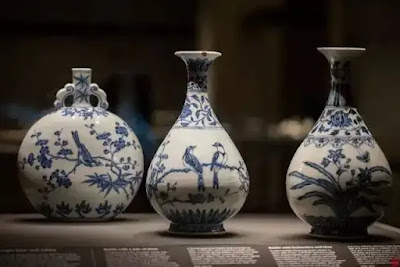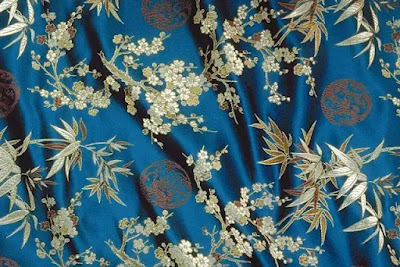National Quintessence
Beijing Opera
In 1790, during the reign of Qianlong emperor of the Qing Dynasty,Anhui opera troupes were called into Beijing for performance.After that, Anhui opera started to absorb the nutrition of various local operas and folk art and finally evolved into its present form after experiencing decades of communication,merging and evolution.The period from 1840 to 1860 saw its regarded as the formation of Beijing Opera and the period from 1883 to 1918 saw its maturity,in which under the leadership of the leading actor Tan Xinpei,Beijing Opera was innovated and promoted to a stage of a new level.The period after 1917 has witnessed its heyday with the emergence of varieties of schools and numerous talents.Sheng,Dan,Jing,Mo and Chou are five types of roles of Peking Opera. Among others,"Four Famous Dan Actors"with Mei Lanfang heading the list are well-known in China and innumerable actors of different types of roies with first-rate art have sprung like mushrooms.
Besides,Beijing Opera is a highly integrated performance art form combining sing, narrate, perform and fight,the four fundamental skills.At the same time,the plays of Beijing Opera derive from materials of wide range,including literature, history, military, economy,politics and folk tradition and conventions.Additionally,Beijing opera is characterized by its unique masks.Beijing Opera masks serve two purposes.One is to indicate the identity and character of the role in the opera.For example,a "red face" means the person is loyal and brave,whereas a "white face"identifies the person as being crafty and evil.The other purpose is to experss people's appraisal of the roles,for instance, whether they are respectable or ridiculous.
Today,playing a significant role in promoting cultural communication between the west and the east and transmitting Chinese culture,Beijing Opera has become an important medium in introducing and transmitting traditional Chinese art.In 2010, Beijing Opera was inscribed on UNESCO's Representative List of the Intangible Cultural Heritage of Humanity.
Porcelain
Porcelain is one of Chinese great inventions and treasure of the world.Porcelain evolves from pottery,going through a process from pottery,glazed pottery and to protoporcelain and eventually becomes what it is now.The earliest porcelain emerged in the Shang Dynasty(about 1600 BC- 1046 BC).Owing to the lower temperature and unadvanced technique, the porcelain made at this time was called"protoporcelain". After undergoing over 1600 years' improvement in technology,the porcelain stepped into the stage of maturity.The first porcelain in China was made in the Eastern Han Dynasty(25AD-220AD), whinch was called celadon.The Song Dynasty withessed the heyday of the porcelain,with well-known categories of porcelain and prominent kilns throughout most of the territory of China.
The main raw material of porcelain is porcelain clay,and the surface of the ware is vitreous glaze;both of the surface and the whole ware need to be fired at a high temperature.During Tang and Song Dynasties,porcelain was sold abroad,and thus China was called"a nation of porcelain".During Song and Yuan Dynasties,due to advanced technique,the porcelain industry was thriving and there emerged a city famous for making porcelain-Jingdezhen.During the Ming and Qing Dynasties,THE porcelain industry reached another peak.In ancient times,porcelain was mainly used as a vessel for holding articles in the folk,while in modern society,it is used especially for descoration.
The invention of porcelain is regarded as the great contribution to the world civilization. "China"as a country and "china"as the synonym of porcelain attest to the truth that the ecquisite and marvelous porcelain has become a symbol of China.
Silk
Silk is a natural protein fiber and some forms of silk together with other fabrics can be woven into textiles.In ancient times, silk(cloth) was usually made from authentic silk threat spat by silkworms.China is said to be the first country in the world to have mastered the sericulture technology to produce raw material of silk cloth.According to Chinese legend,Leizu,Emperor Huang's wife,is the inventor of sericulture technology. Going through Shang,Zhou,and Qin Dynasties,the silk industry reached its peak in the Han and Tang Dynasties,especially after Zhang Qian was dispatched by Emperor Wu to the west region and expanded the Land Silk Road.During the Tang and Song Dynasties, the Maritime Silk Road became as crucial as the one on land,promoting the silk industry.
Silk as a kind of material is characterized by feeling comfortable, absorbing humidity, retaining warmth and protecting against ultraviolet rays.A an important garment fabric in ancient China,silk has been integrated into the long history and culture of the Chinese nation.Ithas influenced Chinese aesthetics and become the precious cultural memory and symbol of the Chinese nation.Silk,as a unique creation of China,is a gem of human civilization.The silk culture formed by silk occupies an important position in the long histoty of the Chinese nation.At present,as the trade along the Belt and Road thrives and Chinese cultural exchange deepens,the silk culture with the Silk Road as the carrier has played an increasingly significant role in politics,economy and culture.
Kung Fu
Traditional Chinese Medicine
Calligraphy
Calligraphy is the writing law of characters and the artistic expression of the beauty of characters. Calligraphy is an important component of Chinese traditional culture, which is likened to wordless poetry, motionless dance, non-illustrated painting and silent music.
Traditional Chinese Painting
Chinese painting, with a long history and distinct features, is an important part of Chinese culture and a treasure of the Chinese nation.
Chinese painting appeared during the Spring and Autumn Period and the Warring States Period. During the Wei, Jin, Southern and Northern Dynasties, the introduction of Buddhism injected fresh blood into it. Then, in the Tang Dynasty, Chinese painting flourished with representatives of Wu Daozi, Zhang Xuan, Han Huang and reached its peak in the Song Dynasty represented by many literati who were good at both calligraphy and painting such as Su Shi, Huang TingJian, Mi Fu and Cai Xiang. In the Yuan Dynasty, excellent painters including Zhao Mengfu and Huang Gongwang emerged with the rising tide of bringing calligraphy into painting. And in the Ming and Qing Dynasties, paintings of landscapes, birds and flowers were prized as the mainstream, while paintings relating to religion and portrait were on the decline. In the Qing Dynasty,the School of Yangzhou Painting created by Eight Eccentric Artists in Yangzhou had greatly influenced the painting of birds and flowers in modern China.
The key feature of Chinese painting is "view the landscape with heart". The painters select which part of the object to be shown, and form the imagery through generalization and analysis, and then process it into an artistic image. Chinese painting is not confined to the similarity in the object's appearance, but focuses upon"similarity in spirit"and artistic conception.
Paper Cutting
The art of Paper Cutting is the crystallization of the wisdom and creation of the Chinese people. Till today, it still possesses its unique values of art and aesthetics. Today the craftsmen are creating works of art loaded with values of modern society with advanced technology, more creative skills and artistic techniques. As inheritors of the art of Paper Cutting, they are carrying forward its fine tradition and revitalizing it.
Crosstalk
The Crosstalk is a genre of folk Quyi involving mainly talking and singing. According to the records of ancient books, the Crosstalk can trace back to the Spring and Autumn Period and the Warring States Period. Later on, after a long-term constant integration with other forms of arts, the Crosstalk has become what it is today. The Chinese Crosstalk originated from Beijing,Tianjin and Nanjing and spread throughout the entire country.
Classical Chinese Music
Classical Chinese music is played with traditional Chinese instruments in the form of solo or ensemble, which is a cultural treasure of the Chinese nation. It can date back to the era of Huangdi (2717 BC-2599 BC), the tribal leader of Huaxia and the creator of Chinese culture. After thousands of years of development, classical Chinese music now has wonderful melodies, various performance forms and unique folk styles, thus playing an important role in the world. Guqin (a plucked seven-string Chinese musical instrument of the zither family without moveable bridges), Bianzhong (or chime bells, an ancient Chinese musical instrument consisting of a set of bronze bells), Pipa(or Chinese lute, a four-stringed Chinese musical instrument, belonging to the plucked category of instruments), Guzheng (or Chinese Zither, another plucked string instrument of the zither family. But unlike Guqin, it has moveable bridges under each string.), and Erhu (or Urheen, a two-stringed bowed musical instrument, more specifically a spike fiddle) are important instruments of classical Chinese music. Music institutions were set up by the government as early as in the Zhou Dynasty, and subsequently, each Dynasty attached great importance to music collection, communication, absorption and innovation. Classical Chinese music pieces are too numerous to name, but the most famous ones are High Mountains and Running Water, Three Stanzas of Plum-Blossoms, Moonlit River In Spring, and Ambush from Ten Sides.
Classical folk music is the medium for the ancient people to express their feelings combined with their circumstances and experiences, reflecting their thoughts, morality, feelings and pursuit for the nature. In addition, the music also contains thought-provoking values that people harbored at that time, which in return makes it more glamorous. With its charming tunes and arrangement, classical music cultivates people's sentiment, improves people's aesthetic taste, and more importantly, purifies the souls of those who live a life of the hustle and bustle of big cities today.
Chinese Tea Culture
Virtues like being self-disciplined and calm in Chinese tea culture has reinvigorated against the money-oriented society, while under the Belt and Road Initiative, tea culture also provides new business opportunities and development paths for China's economy.




























No comments